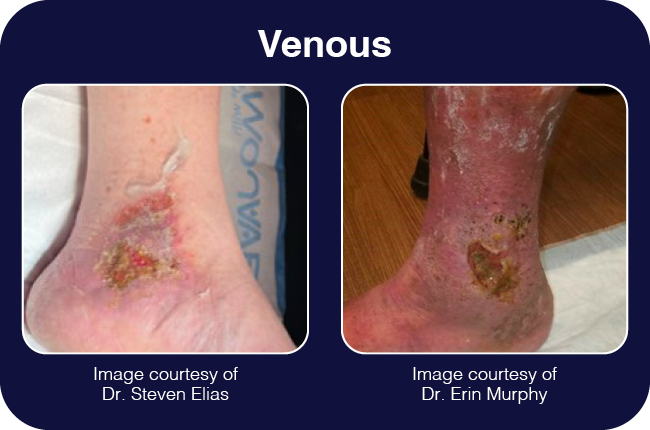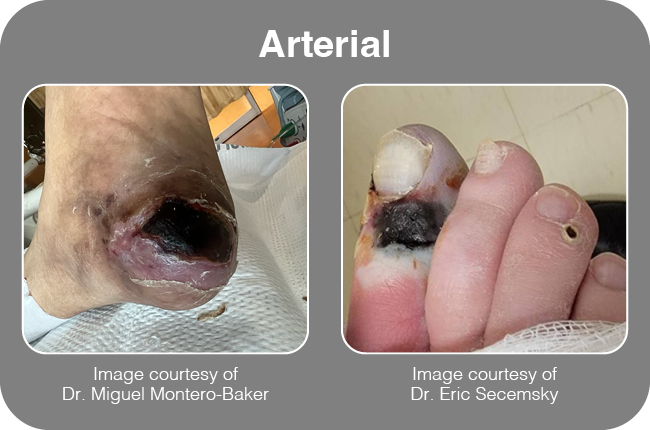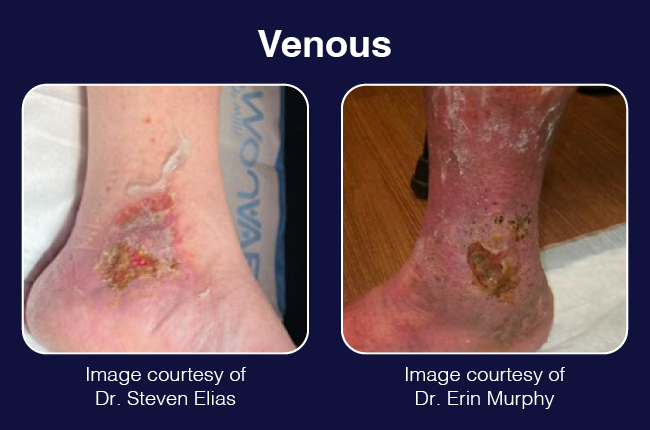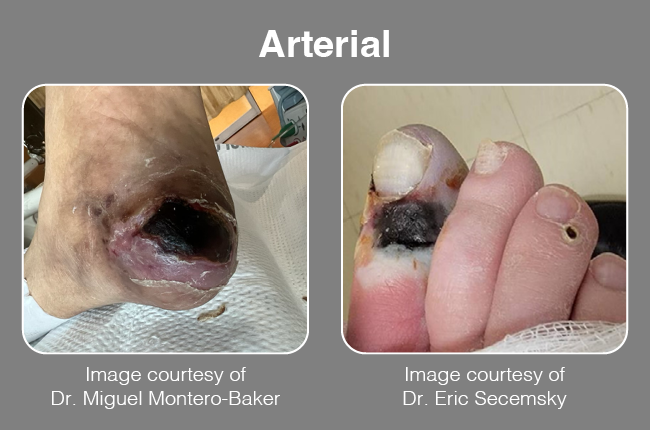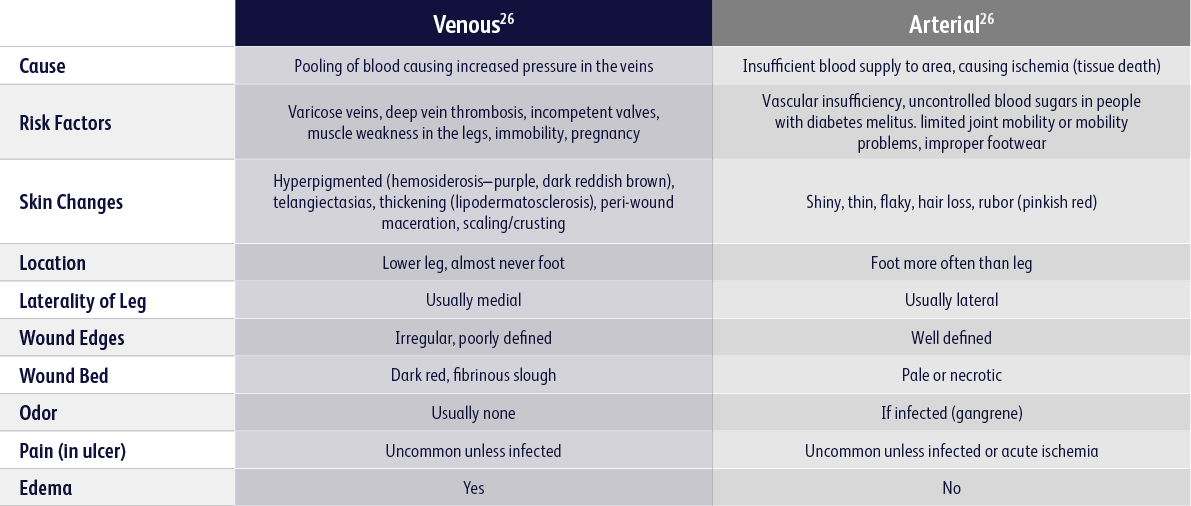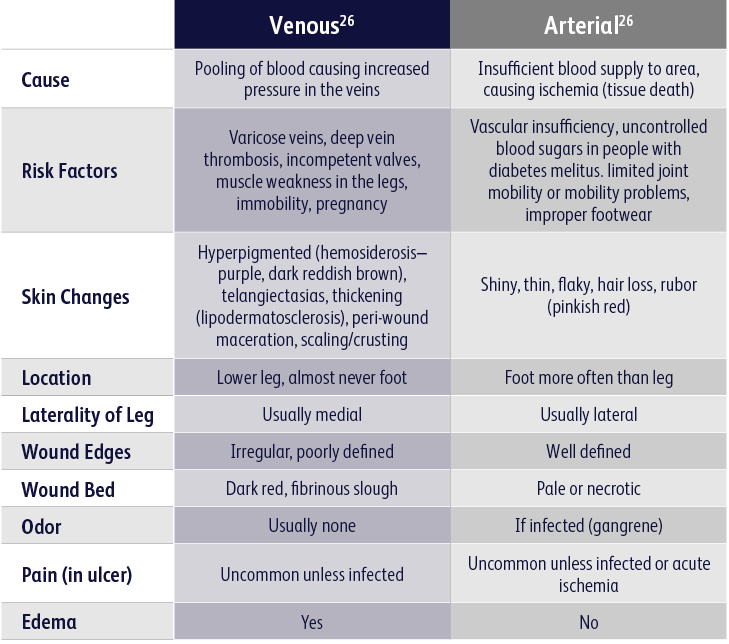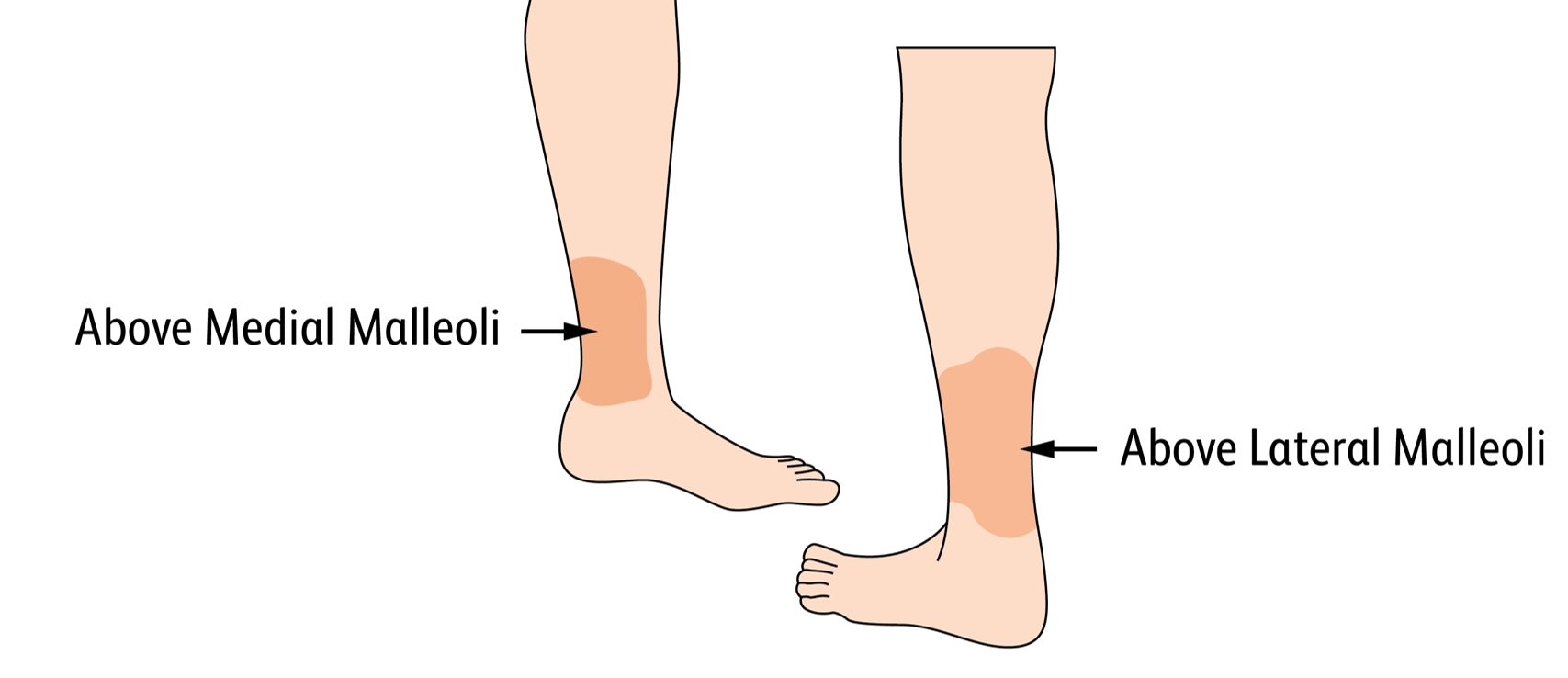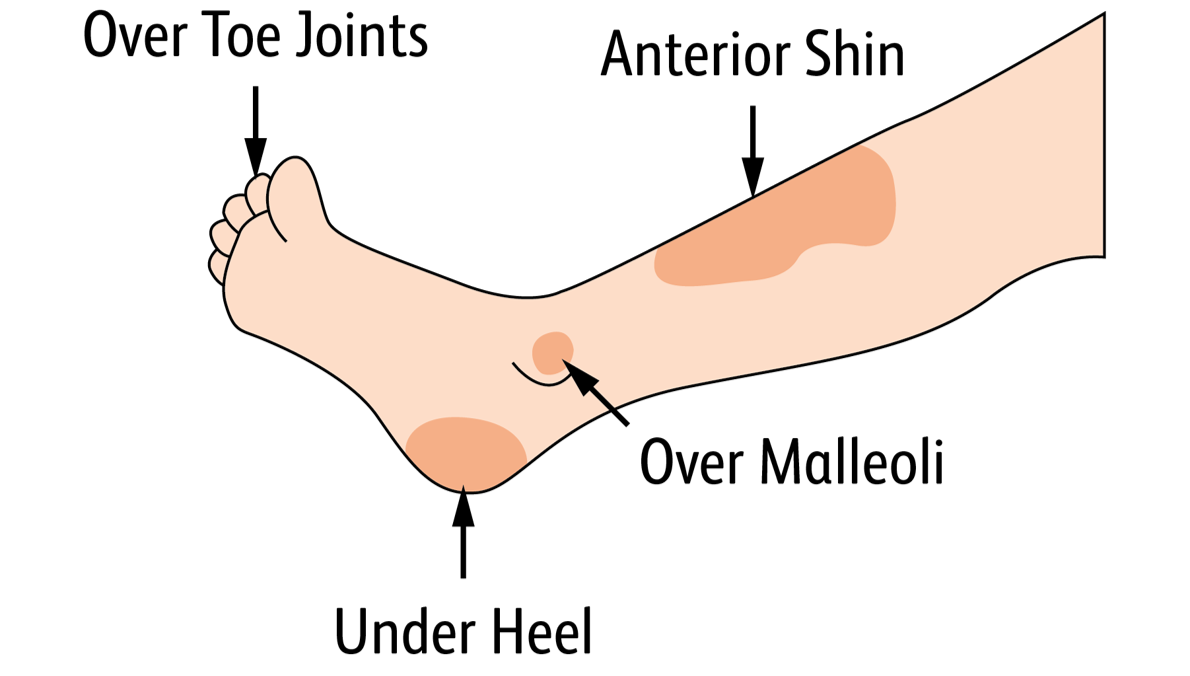Venous Ulcer Pathophysiology
Venous ulcers are caused by chronic venous hypertension resulting from either venous reflux, outflow obstruction, or a combination of the two.4 Venous reflux occurs when the 1-way valves and calf muscle pumps stop working properly; as a result, blood flows backward and pools in the lower leg veins. Venous ulcer formation is thought to be the primary cause of both venous reflux and obstruction.18,29 In addition, venous hypertension may result in skin changes with hyperpigmentation; lipodermatosclerosis and eventually leading to venous ulceration.4
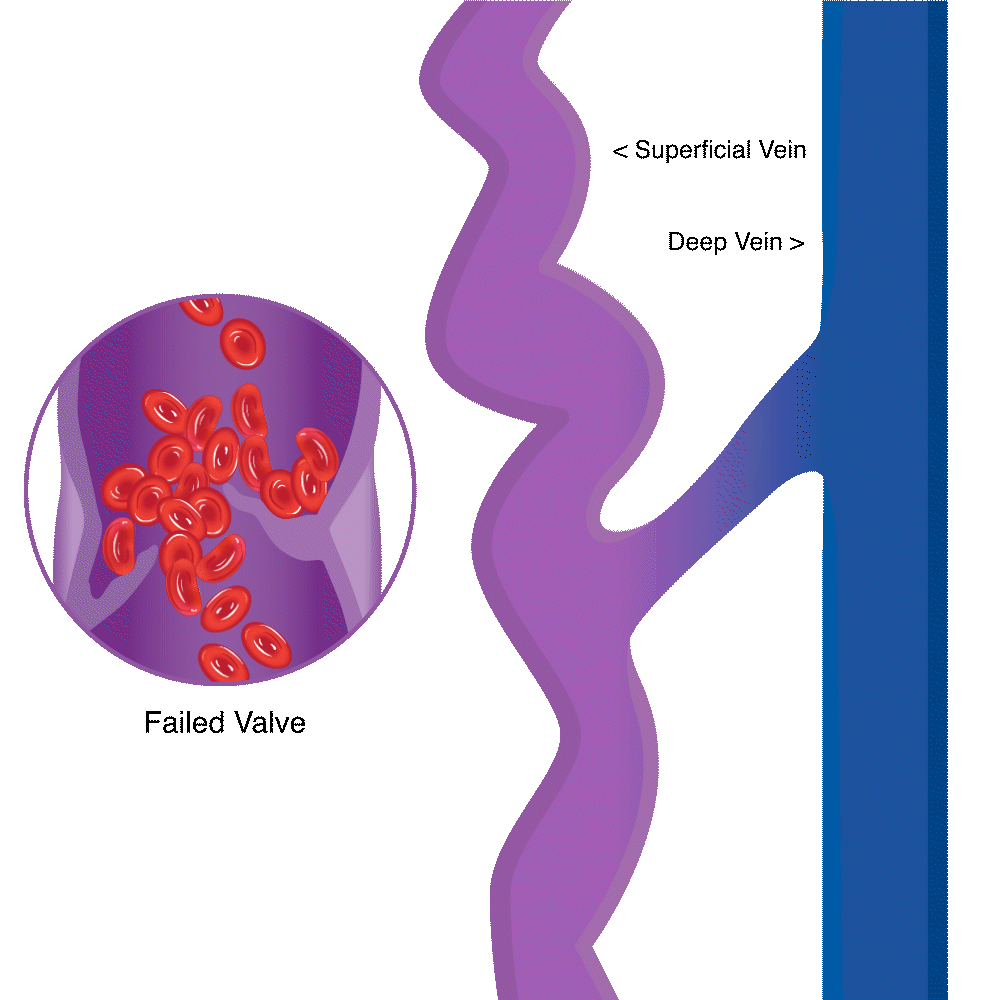
Perforator veins run through the muscular fascia as they connect the deep and superficial venous system, allowing passage of blood in between them. It’s important to identify any incompetent perforator veins (IPVs) with venous reflux that could be feeding into a venous ulcer. When abnormal blood flow or venous reflux is present, or an IPV has been identified in association to a non-healing venous ulcer, then treatment to close the perforating vein is recommended. These are often beneath areas of skin changes, open or closed wounds.19
Incompetent Perforator Vein Treatment and Guidelines
Presence of an active or healed ulcer is a potential indicator of incompetent perforator veins. The Society for Vascular Surgery/American Venous Forum (SVS/AVF) clinical practice guidelines for care of patients with a chronic venous ulcer, currently defines a pathologic perforator as having a “diameter of >3.5 mm and >500 milliseconds of retrograde flow”. These guidelines recommend ablation of pathologic perforator veins when located beneath or associated with potential ulcer beds in lipodermatosclerosis (C4b), healed ulcers (C5), or active ulcers (C6).19
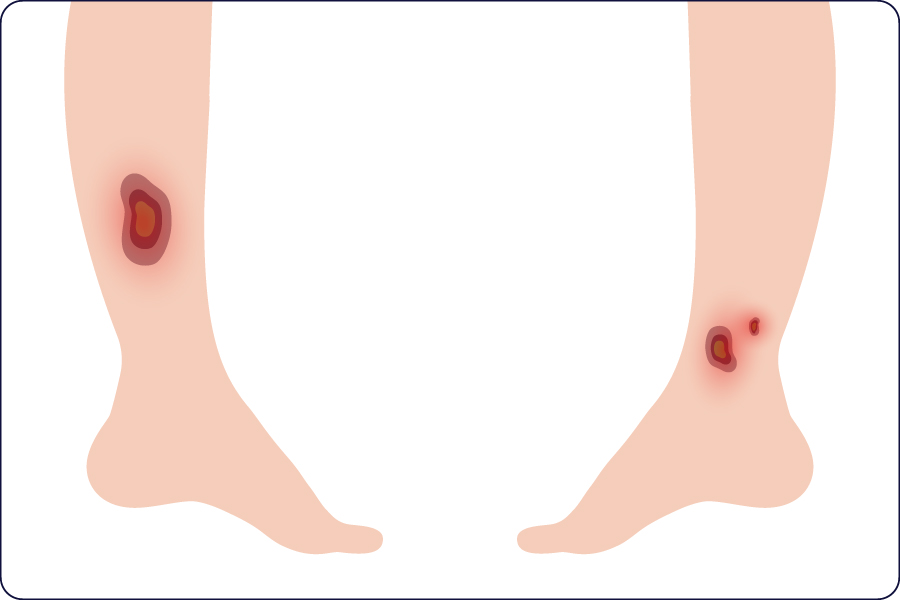
Venous Ulcer Statistics
Over time, the most severe classification of CVD will present as an active venous ulcer (C6). At 2 million, the annual number of new venous ulcer cases exceeds that of other chronic diseases, including the 1.7 million new cases of all cancers combined and 1 million new cases of diabetic foot ulcers.6
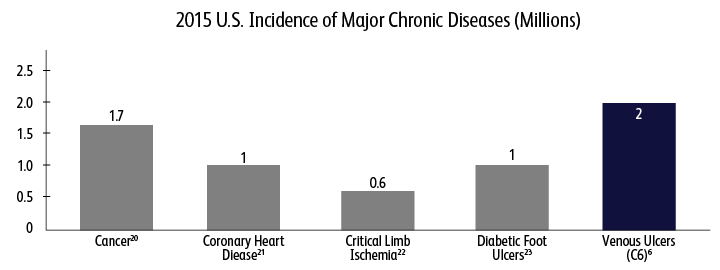
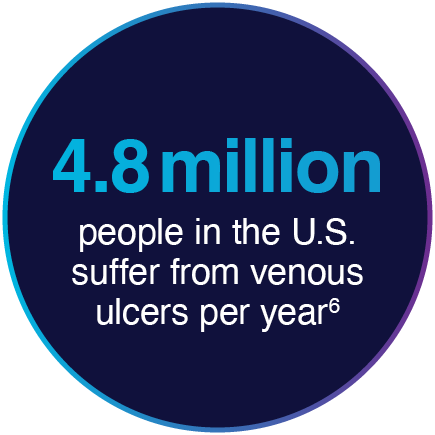
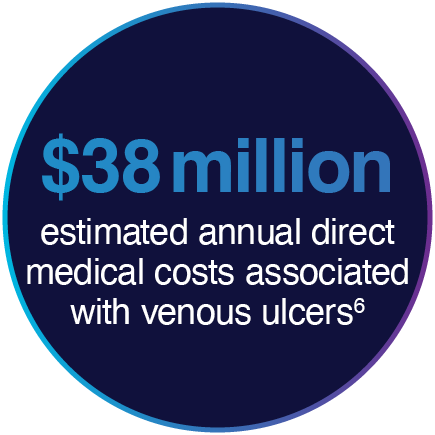
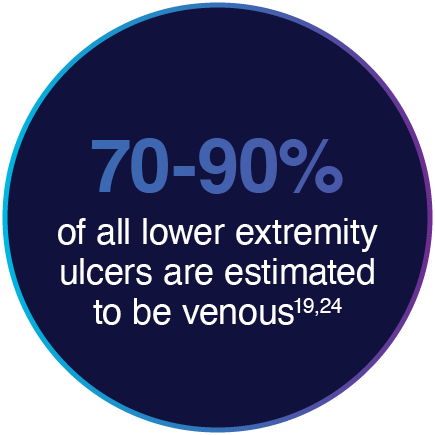
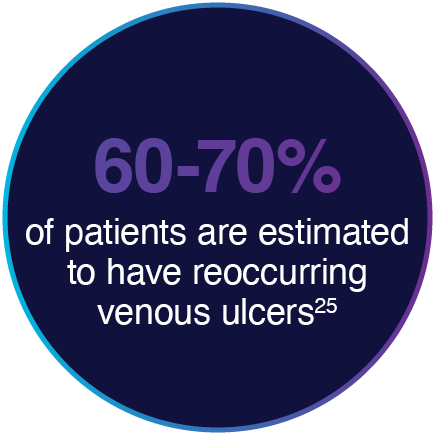
Venous vs. Arterial Leg Ulcers
While both venous and arterial ulcers tend to form on the lower extremities, it’s critical to know that they are very different in terms of presentation, risk factors, skin changes, location of ulcer and various other aspects.26
